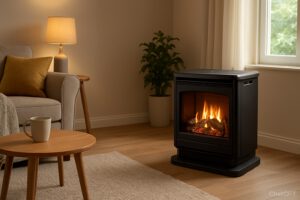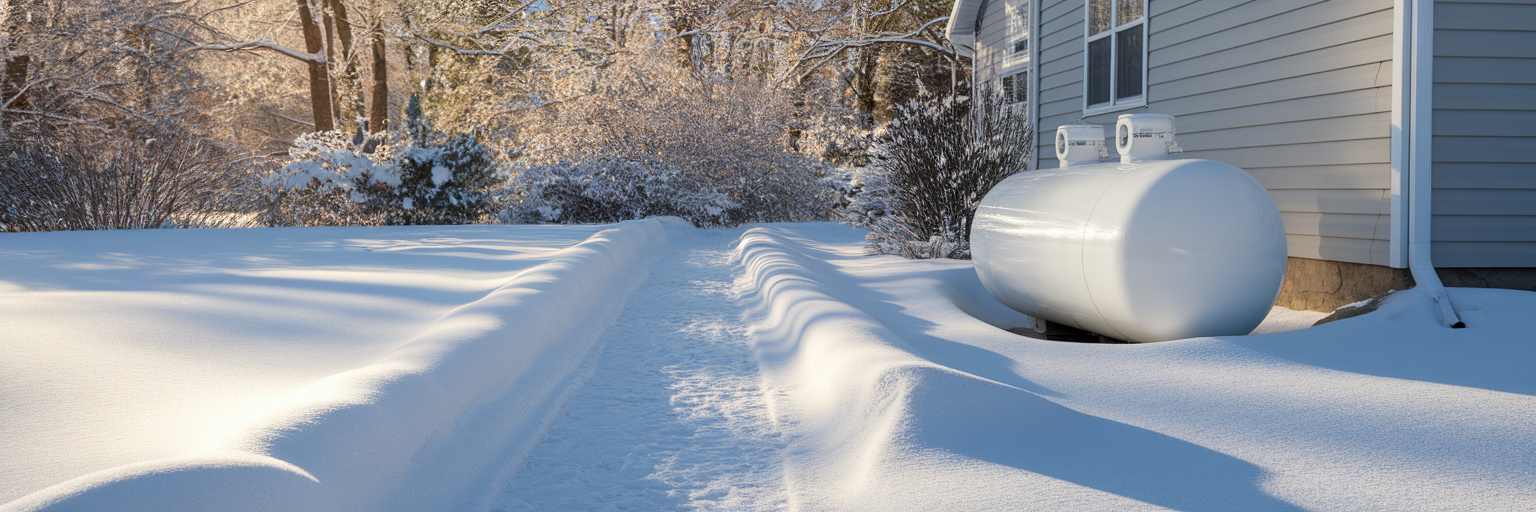
For millions of American homes and businesses, propane is the lifeblood of winter warmth, especially in areas where natural gas lines are a distant thought. It represents energy independence and reliability. Yet, with that independence comes the responsibility of managing a significant household expense. This article provides practical ways to take control of your propane consumption, focusing on the tangible financial benefit of lower heating bills and the invaluable peace of mind that comes from a secure heat supply, no matter what the weather brings.
Achieving efficient propane heating isn’t about one single trick. It rests on three foundational pillars we will explore: fortifying your home against heat loss, adopting smarter consumption habits, and mastering your fuel supply. By understanding these principles, you can move from reacting to high bills to proactively managing your energy use and comfort all winter long.
Fortifying Your Home Against Heat Loss
Before you even touch your thermostat, the most impactful step you can take is to reduce your home’s demand for heat. Think of your house as a thermos; the better it’s sealed, the less energy it needs to stay warm. A simple DIY energy audit can reveal surprising sources of heat loss. You can often feel the cold air yourself, standing near a window on a windy day or noticing a draft by an exterior door.
Start by methodically checking these common problem areas:
- Inspect Window and Door Frames: Look for visible gaps or feel for drafts. Applying new weatherstripping or a simple bead of caulk is a low-cost fix that offers immediate returns.
- Seal Exterior Wall Penetrations: Gaps around plumbing pipes, outdoor faucets, and electrical outlets are notorious for letting cold air sneak in. Use expanding foam or caulk to seal them from the inside and outside.
- Check the Attic Hatch and Fireplace Damper: An unsealed attic hatch is like an open window to the coldest part of your house. Ensure it closes tightly and has weatherstripping. Likewise, a fireplace damper left open is a chimney for your heated air.
Beyond sealing leaks, proper home insulation for winter is your primary defense. Insulation is rated by its R-value, which simply measures its ability to resist heat flow. The higher the R-value, the better it insulates. Check the insulation levels in your attic and crawlspace, as these are critical areas for heat loss. The Department of Energy provides recommendations by climate zone, giving you a clear benchmark. Even small additions like insulated curtains and area rugs on hardwood floors can create extra thermal barriers, keeping the warmth right where you want it.
Adopting Smart Consumption and Appliance Habits
With your home sealed against the cold, the next step is to refine your daily routines and equipment use. This is where you can learn how to save on propane heat without sacrificing comfort. The thermostat is your command center. The simple act of setting it back 7 to 10 degrees Fahrenheit for eight hours a day, such as when you’re asleep or at work, can reduce your heating costs significantly. A programmable or smart thermostat makes this effortless.
- Automation: It removes the daily guesswork. You set a schedule once, and the thermostat handles the adjustments, ensuring you never waste fuel by forgetting to turn it down.
- Consistency: It prevents the common mistake of overheating a home, which consumes propane at a surprising rate.
- Comfort: Your home is warm and waiting when you wake up or return, but it was saving energy while you were away.
Another smart habit is scheduling annual maintenance for your propane furnace and appliances. This isn’t an expense, it’s an investment. A clean, well-tuned furnace operates at peak efficiency, using less fuel to produce the same amount of heat. It also prevents the kind of unexpected breakdowns that always seem to happen on the coldest night of the year. For businesses with larger heating systems, understanding the specific maintenance needs of different equipment is vital, and exploring dedicated commercial propane services can ensure your operations run smoothly and efficiently.
Mastering Your Propane Tank and Supply
Understanding your propane tank is key to avoiding both inconvenience and unnecessary costs. The first step is knowing how to read your tank gauge. It’s a simple dial, usually under the lid, that shows the percentage of propane remaining. The most important rule to remember is the 30% rule. This is the answer to when to refill propane tank. Calling your supplier when the gauge hits 30% gives them ample time to schedule a delivery, even during busy periods.
Letting a tank run empty is more than just a cold-house problem. For safety reasons, a technician must perform a pressure and leak test before the system can be turned back on, which often comes with an extra service fee. To avoid this, you can choose between two main delivery models.
| Feature | Will-Call Delivery | Automatic Delivery |
|---|---|---|
| Responsibility | Customer must monitor tank and schedule refills | Propane supplier monitors usage and schedules refills |
| Risk of Run-Out | Higher; relies on customer diligence | Very low; proactive scheduling prevents shortages |
| Convenience | Requires active management and planning | ‘Set it and forget it’ peace of mind |
| Best For | Users with unpredictable or very low usage | Most homeowners and businesses seeking reliability |
This table outlines the key differences in responsibility and reliability between the two primary delivery models. The choice depends on a user’s desire for control versus convenience.
Proper propane tank winter care is also essential. Always keep a clear path to your tank for delivery trucks and gently brush away snow or ice with a broom, never a sharp object. You may also notice your tank is never filled beyond 80%. This is a critical safety feature that allows room for the propane liquid to expand with temperature changes. For most homeowners, the reliability of automatic delivery is the best choice, and dependable residential propane services are designed to provide that exact peace of mind.
Choosing a Reliable Propane Partner
Your propane supplier is more than just a vendor; they are a partner in keeping your home safe and warm. When choosing a provider, looking past the price per gallon to the overall value they offer is critical. A few cents saved per gallon means nothing if your delivery is late during a blizzard.
First, consider reputation and reliability. Does the company have a proven track record of timely deliveries, especially during major winter storms? Ask neighbors or look for local reviews. A supplier’s ability to manage logistics under pressure is a true test of their worth. Second, inquire about flexible pricing and payment plans. Options like budget plans, which spread your estimated annual cost into equal monthly payments, can prevent the shock of large winter bills. Pre-buy plans allow you to lock in a propane price before the winter demand surge. These tools are designed to help you manage your household cash flow effectively.
Finally, and most importantly, is the provider’s commitment to safety. A trustworthy company invests in certified safety programs and offers 24/7 emergency service. Their technicians should be thoroughly trained and certified. This commitment is a non-negotiable part of the value they provide, ensuring that every delivery and service call adheres to the highest industry standards. To understand what this entails, it’s helpful to review a provider’s detailed information on safety protocols and commitments.
A Year-Round Approach to Propane Efficiency
The most effective winter propane usage tips are not just quick fixes but part of a year-round strategy. By combining these efforts, you create a powerful system for managing your energy costs. The framework is simple: seal your home, manage your habits, monitor your supply, and choose a reliable partner.
Instead of scrambling when the first cold front arrives, shift your mindset to proactive management. Use the milder spring and summer months to your advantage. This is the perfect time to schedule annual appliance maintenance when technicians are less busy or to tackle larger projects like adding attic insulation. By taking these steps throughout the year, you ensure your home is prepared long before winter arrives. This approach gives you lasting control over your energy bills and the confidence that your home will remain a warm, safe refuge all season long. For more ongoing advice, exploring insights on our blog can provide further information to keep you ahead of the curve.
About Jennifer Whitaker
Propane industry expert and content contributor for MyPropane.com.
View all posts by Jennifer Whitaker →Related Articles

When Does Your Propane Tank Need Immediate Attention
Oct 20, 2025 • 7 min read
Discover the critical indicators, from strange smells to performance issues, that signal your propane system requires professional attention.

Propane Space Heating for Homes: Complete Guide
Sep 17, 2025 • 5 min read
Discover propane heating solutions for your home. Learn about furnaces, space heaters, efficiency, costs, and safety for residential propane heating…

